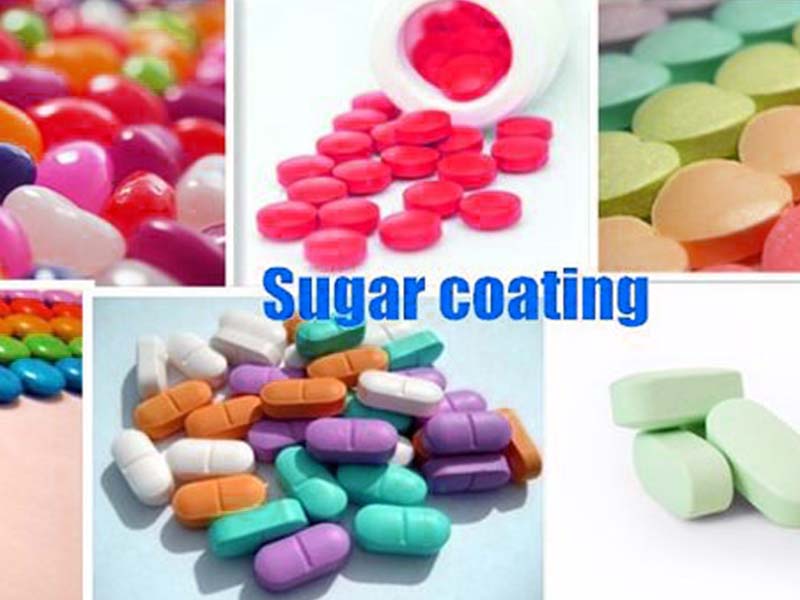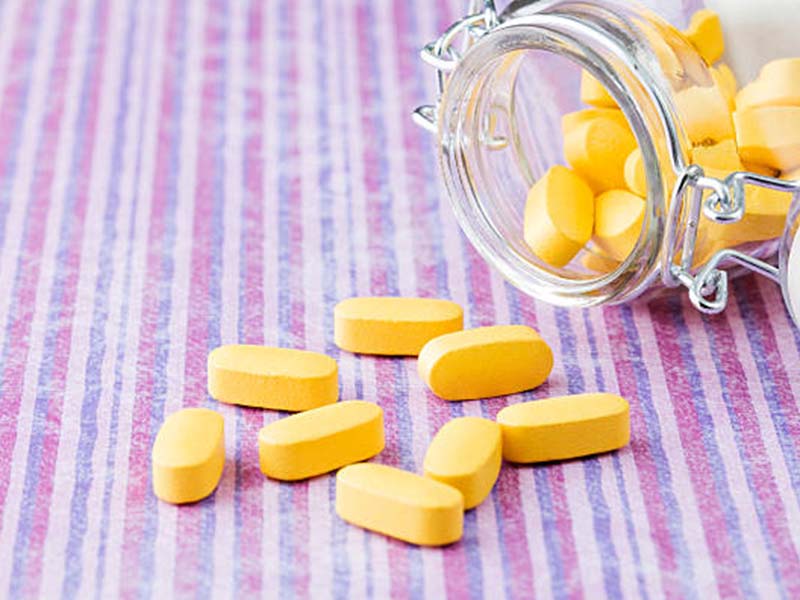The sugar coating method involves repeatedly adding a coating solution or mixture and drying off the solvent to build up layers of coating material on the tablet cores. The procedure is made up of several stages, every of which is intended to perform a certain purpose. A standard sugar-coating technique includes six steps:
- The tablet core is sealed
- Sub-coating
- Smoothing
- Coating with color
- Polishing
- Printing
1.Tablet core sealing (water – resistant covering)
Sealing coating entails applying a specific polymer-based coating straight to the tab core (by spray processes). It’s an alternative measure, but it’s frequently necessary to keep the tab core and ingredients from absorption of water, melting, and disintegrating in during sugar-coating procedure. Sealing also prevents some materials (such as oils, acids, and so on) from transferring to the sample surface and detracting from its look.
In a manually seal-coating process, the sealants (often alcoholic resin formulations containing 10-30% solid percentages) is uniformly and carefully applied or sprayed over the tumbling tablet bed (preheated to 40oC). Warm air is then pushed into the coating pan to speed drying and preventing tablets from staying together.
The amount of material used as a sealing coat will be determined mostly by tablet and batch size. Another variable is tablet permeability, which absorbs the first administration of solution, stopping it from distributing equally across the surface of each and every tab in the sample. As a result, one or more more applications of resin mixture may be necessary to guarantee that the tablet cores are adequately sealed.
Excess talc use can create issues by providing a high level of slide to the tablets, prohibiting them from rotating effectively in the pan, and secondly by generating a surface that is tough to moisten at the start of the succeeding sub-coating cycle. Poor wetting usually results in irregular sub-coat buildup, especially on the tablet borders. When any of these difficulties occurs, one remedy is to substitute some or all of the talc with another substance, such as terra alba, which forms a somewhat rougher surface.

2.Sub-coating
Sub-coating is put to the tablet core to round or shape the tablet’s sides to the appropriate look.
To flatten the sharp edge of the core (a smooth surface is not essential) to create a suitable substrate for the future smoothing phase.
This is the first key stage in the sugar-coating process. It entails applying enormous amounts of sugar coverings to the tablet core, considerably boosting the tablet weights by 50 to 100%. Sub-coating allows for the quick development required just round up the tablet border. It also serves as the base for smoothing and coloring coating, with any flaws in the last sugar coat frequently being attributed to flaws in the sub-coat.
There are two processes for applying sub-coating: lamination and suspension sub-coating.
Sub-coating is often accomplished by alternating gum mixture with dusting powdered (talc or calcium carbonate) until the required shape and consistency is obtained. After each syrup administration, extra water is extracted.
3. Grossing (Smoothing)
Filling out and smoothing uneven parts or sections of the tablet is done during the grossing or smoothing process. The method progressively grows the tablet’s size to the appropriate specifications.
- to level the rough core area
- to create a smooth foundation for colored covering
4. Colouring
Color coating serves as the most important final stage in the coating process since numerous sugar solutions are used to ensure that the desired color is produced.
It entails applying syrup solutions (60-70% sugar solids) containing the essential coloring components several times to get the required hue.
Sugar-coating colorants are classified as water-soluble dyes or water-insoluble colors.
Water-soluble dyes have primarily been used in pharmaceutical tablet coating because they create the most beautiful sugar-coated tablets. However, in order to accelerate the coating process, reduce color irregular migration, and making sure color reproducibility from batch to batch, water-soluble dyes have gradually been replaced with water-insoluble colorant. Tablet color coating with water-insoluble pigments has clear advantages over water-soluble dyes, the most prominent of which are:
- Lack of water solubility minimizes color transfer during drying
- Superior light stability

5. Polishing
A polishing step is the final phase in the sugar coating process. This is done to give the tablet a gleaming, unique look. To polish the tablets on the inside of a polishing pan, waxes such as carnuba wax, candelila wax, beeswax, and hard paraffin are applied.
Sugar-coated tablets have a Matt exterior finish by origin and hence necessitate an additional polishing step to achieve the high degree of shine that characterizes completed sugar-coated tablets. Polishing is performed by applying wax combinations to coated tablets in a polishing pan, either as powders (typically finely milled) or as solutions/dispersion in different organic solvents.
6. Printing
Lastly, edible ink may be used to print tablet marks or logos on the tablet’s cover.
All oral solid dose forms are commonly identified with a product title, business name or logo, dosage strength, or other distinguishing marks. For sugar-coated tablets, such identifying entails printing unique edible inks into the coated tablet surface using an offset related processes printing method.
Why choosing SENIEER?
Senieer, a leading global producer and supplier of pharmaceutical equipment including tablet coating machines , provides ONE STOP SOLUTION. Senieer is the premier global partner for companies in the pharmaceutical, food, chemical, and cosmetics industries. In China, Senieer has mostly concentrated on solid dosage forms for over 34 years. Integrated process solutions that are dependable. We manufacture equipment in accordance with global standards such as GMP, cGMP, and the US FDA.
Senieer technical team members improve one-stop solution services for comprehensive projects, from consulting to design. We completely meet your method and needs for resolving all of your problems.










